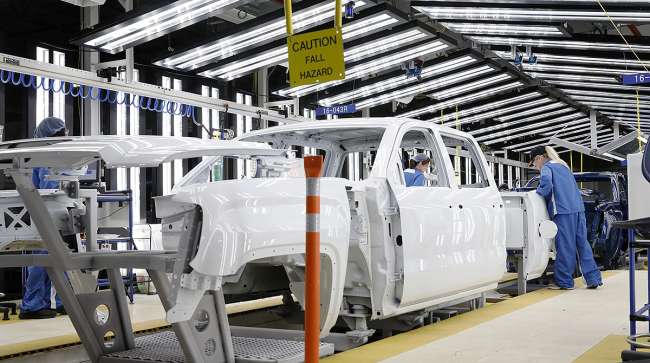GM Plots Temp-Worker Push With Union Still Seething Over Doomed Plants

[Stay on top of transportation news: Get TTNews in your inbox.]
General Motors Co. wants to hire more temporary workers at U.S. plants and trim its health care costs, said people familiar with the automaker’s thinking. Its union — still steaming over the carmaker’s plans to close four U.S. factories — has little interest in obliging.
That sets up a hot summer of negotiations for the United Auto Workers and GM as the two try to hash out a new four-year labor deal in the coming months. The last contract was bargained over in better times, when auto sales were growing from financial crisis lows to all-time highs and GM was marching toward record profits.
This year will be much different. The U.S. auto market is still healthy but is widely expected to shrink for the second time in three years. GM has put four U.S. plants with 2,800 employees on the chopping block, forcing some workers to decide between transferring to out-of-state factories or leave the company. The UAW isn’t nearly as satisfied as President Donald Trump with GM’s efforts to offload one of the plants in Ohio to a tiny company with a scant track record of profitably manufacturing vehicles.
“It will be a tough set of talks,” said Harley Shaiken, a labor relations professor at the University of California at Berkeley. “GM is staking out tough ground going after health care and wanting more temporary workers. And all of this is in the context of closed plants.”
GM’s argument is all dollars and cents. Workers at plants run by Japanese rivals Toyota Motor Corp., Nissan Motor Co. and Honda Motor Co. make $50 an hour in wages and benefits. GM’s workers cost $63 an hour, said the people, who asked not to be named because the company’s labor negotiations are private.
If GM can hire more temporary workers who are paid less and aren’t on the same health care plan, the automaker argues that it can offer greater job security for its unionized employees.
GM also would like to find ways to reduce its roughly $900 million annual health care bill for union workers, including by getting greater contributions from employees, the people said.
Right now, Japanese automakers staff their plants with about 20% temporary workers. By comparison, about 7% of GM’s staff are temps. Those workers have no road to becoming full-time GM employees, which rankles the UAW and will be an issue this summer.
“The big thing is temporary workers,” said Ryan Buchalski, president of UAW Local 598 in Flint, Mich., where about 4,800 hourly employees make heavy-duty pickup trucks. “They used to just be here for summer help. Now they are here all year.”
Brian Rothenberg, a UAW spokesman, declined to comment.
GM is looking for more factories to adopt agreements like the one used by its electric-car plant in Orion, Mich. There, workers employed by a subsidiary called GM Subsystems pay staff in the plant less money for jobs such as handling parts and materials before they go to the assembly line. Four of GM’s 33 U.S. plants have such contracts now.

GM Lordstown plant in Ohio. (Maddie McGarvey/Bloomberg News)
Temps and lower-wage work will be an issue for a union that already wants GM to increase investment in U.S. plants. The UAW is hoping to get vehicles allocated to a plant near Detroit in Hamtramck and another in Lordstown, Ohio. The latter looks increasingly unlikely — the automaker is in discussions to sell the factory to electric truckmaker Workhorse Group Inc.
The plants that aren’t being allocated future product also are running short of employees, futher clouding the future of those sites. GM has said 1,500 workers have been relocated to other factories and there are jobs for the remaining 1,300 employees.
GM could still bring products back from plants in Mexico, where it’s the largest automaker with 16,000 workers. The UAW was particularly angered that GM started building the Chevrolet Blazer sport utility vehicle south of the border just as the company was deciding to idle Lordstown.
Shaiken said that even if GM doesn’t need more production for the U.S. market, the company is a major exporter from Mexico and could shift models to the U.S. as part of bargaining. The carmaker’s existing labor contract expires Sept. 14 at midnight.
For its part, GM has argued that its $23 billion in investment in the U.S. since 2009 is almost five times what it has spent in Mexico. The company’s 48,000 union workforce is triple what it has in Mexico.
That track record is still unlikely to settle the UAW’s desire for more jobs. When GM announced a $300 million investment in Orion, UAW Vice President Terry Dittes was on hand for the announcement. When taking the podium, he was as interested in the plants GM is idling as he was in Orion. “These four plants will not be forgotten,” Dittes said.




